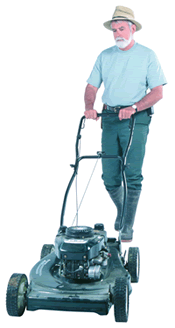
- Always follow the instructions on the product label.
- Apply repellents only to exposed skin and/or clothing (as directed on the product label.) Do not use repellents under clothing.
- Never use repellents over cuts, wounds, or irritated skin.
- Do not apply to eyes or mouth, and apply sparingly around ears. When using sprays, do not spray directly on face—spray on hands first and then apply to face.
- Use just enough repellent to cover exposed skin and/or clothing. Heavy application and saturation are generally unnecessary for effectiveness. If biting insects do not respond to a thin film of repellent, then apply a bit more.
- After returning indoors, wash treated skin with soap and water or bathe. This is particularly important when repellents are used repeatedly in a day or on consecutive days. Also, wash treated clothing before wearing it again. (This precaution may vary with different repellents—check the product label.)
- If you get a rash or other bad reaction from an insect repellent, stop using the repellent, wash the repellent off with mild soap and water, and call a local poison control center for further guidance. If you go to a doctor because of the repellent, take the repellent with you to show the doctor.
Despairing ever getting your employees trained? It isn’t easy to fit it in—schedule-wise or budget-wise—but now there’s the Environmental Compliance Library from Employee Training Center. Train all your people, at their convenience, 24/7. Start Your Free Trial
The Best Mosquito Repellents to Use
When it comes to insect repellent products there’s a lot of choice out there. CDC recommends the use of products containing active ingredients which have been registered with EPA for use as repellents applied to skin and clothing.
When EPA registers a repellent, they evaluate the product for efficacy and potential effects on human beings and the environment. EPA registration means that EPA does not expect a product, when used according to the instructions label, to cause unreasonable adverse effects to human health or the environment.
Of the active ingredients registered with EPA, two have demonstrated a higher degree of efficacy.
According to CDC, products containing the following active ingredients typically provide longer-lasting protection than others:
- DEET (Chemical Name: N,N-diethyl-m-toluamide or N,N-diethly-3-methyl-benzamide)
- Picaridin (KBR 3023, Chemical Name: 2-(2-hydroxyethyl)-1-piperidinecarboxylic acid 1-methylpropyl ester )
CDC also says that products containing the following active ingredients typically provide reasonably long-lasting protection:
- Oil of Lemon Eucalyptus or PMD (Chemical Name: para-Menthane-3,8-diol) the synthesized version of oil of lemon eucalyptus
- IR3535 (Chemical Name: 3-[N-Butyl-N-acetyl]-aminopropionic acid, ethyl ester)
Oil of lemon eucalyptus [p-menthane 3,8-diol (PMD)], a plant based repellent, is also registered with EPA. In two recent scientific publications, when oil of lemon eucalyptus was tested against mosquitoes found in the US, it provided protection similar to repellents with low concentrations of DEET.
Train on demand with TrainingToday. Register today to start your FREE trial and get instant access to over 20 environmental compliance courses. Start Your Free Trial
Permethrin. In addition, certain products which contain permethrin are recommended for use on clothing, shoes, bed nets, and camping gear, and are registered with EPA for this use. Permethrin is highly effective as an insecticide and as a repellent. Permethrin-treated clothing repels and kills ticks, mosquitoes, and other arthropods and retains this effect after repeated laundering. The permethrin insecticide should be reapplied following the label instructions. Some commercial products are available pretreated with permethrin.
Pesticide Applicators and the Worker Protection Standard (WPS)
EPA regulates the occupational exposure to agricultural pesticides of employees on farms, forests, nurseries, and greenhouses. These WPSs cover both workers in areas treated with pesticides and employees who handle (mix, load, apply) pesticides. These regulations contain exposure reduction measures that will reduce the risk of pesticide poisonings and injuries among agricultural workers and pesticide handlers.
EPA’s Worker Protection Standard for Agricultural Pesticides How to Comply Manual contains requirements for pesticide safety training, notification of pesticide applications, use of PPE, restricted entry intervals following pesticide application, decontamination supplies, and emergency medical assistance. The manual provides detailed information on who is covered by the WPS and how to meet regulatory requirements.
See tomorrow’s Advisor to find out what you can do to control mosquitoes in your area.

Would it be more beneficial to use bug zappers vrs. bug repellent?